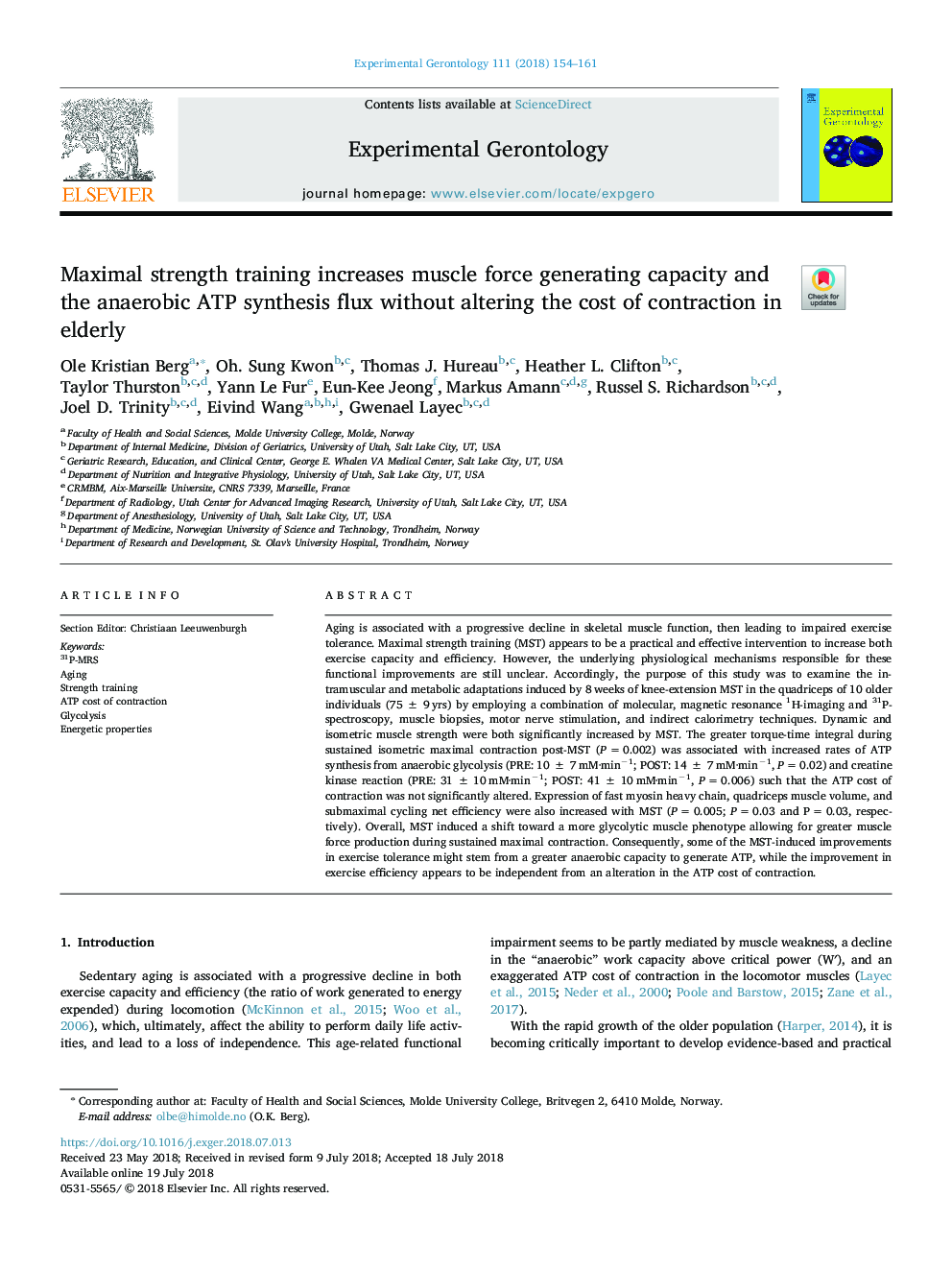| Article ID | Journal | Published Year | Pages | File Type |
|---|---|---|---|---|
| 8262113 | Experimental Gerontology | 2018 | 8 Pages |
Abstract
Aging is associated with a progressive decline in skeletal muscle function, then leading to impaired exercise tolerance. Maximal strength training (MST) appears to be a practical and effective intervention to increase both exercise capacity and efficiency. However, the underlying physiological mechanisms responsible for these functional improvements are still unclear. Accordingly, the purpose of this study was to examine the intramuscular and metabolic adaptations induced by 8â¯weeks of knee-extension MST in the quadriceps of 10 older individuals (75â¯Â±â¯9â¯yrs) by employing a combination of molecular, magnetic resonance 1H-imaging and 31P-spectroscopy, muscle biopsies, motor nerve stimulation, and indirect calorimetry techniques. Dynamic and isometric muscle strength were both significantly increased by MST. The greater torque-time integral during sustained isometric maximal contraction post-MST (Pâ¯=â¯0.002) was associated with increased rates of ATP synthesis from anaerobic glycolysis (PRE: 10â¯Â±â¯7â¯mM·minâ1; POST: 14â¯Â±â¯7â¯mM·minâ1, Pâ¯=â¯0.02) and creatine kinase reaction (PRE: 31â¯Â±â¯10â¯mM·minâ1; POST: 41â¯Â±â¯10â¯mM·minâ1, Pâ¯=â¯0.006) such that the ATP cost of contraction was not significantly altered. Expression of fast myosin heavy chain, quadriceps muscle volume, and submaximal cycling net efficiency were also increased with MST (Pâ¯=â¯0.005; Pâ¯=â¯0.03 and Pâ¯=â¯0.03, respectively). Overall, MST induced a shift toward a more glycolytic muscle phenotype allowing for greater muscle force production during sustained maximal contraction. Consequently, some of the MST-induced improvements in exercise tolerance might stem from a greater anaerobic capacity to generate ATP, while the improvement in exercise efficiency appears to be independent from an alteration in the ATP cost of contraction.
Related Topics
Life Sciences
Biochemistry, Genetics and Molecular Biology
Ageing
Authors
Ole Kristian Berg, Oh. Sung Kwon, Thomas J. Hureau, Heather L. Clifton, Taylor Thurston, Yann Le Fur, Eun-Kee Jeong, Markus Amann, Russel S. Richardson, Joel D. Trinity, Eivind Wang, Gwenael Layec,
